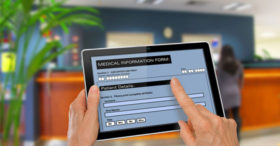What happens if illness, injury or age-related dementia renders you unable to make decisions or communicate your wishes regarding your health care or financial affairs? Unless your estate plan addresses these situations, your family may be forced to seek a court-appointed guardian. Health care arrangements are particularly important because your wishes won’t necessarily coincide with someone else’s judgment about what’s “in your best interests.”
To help ensure that your wishes are carried out, create a health care power of attorney (HCPOA). Sometimes referred to as a “health care proxy” or “durable medical power of attorney,” an HCPOA appoints a representative to make medical decisions on your behalf if you’re unable to do so.
Choose a representative
Who should be your representative? The natural inclination may be to name your spouse or an adult child. This may be the right choice, but not always.
Consider whether the family member has a differing view on when to continue or terminate life-sustaining measures or would find it too difficult to make such decisions. Designate someone you trust to carry out your wishes.
Detail your health-care-related wishes
Your HCPOA should provide guidance on how to make health care decisions. Although it’s impossible to anticipate every potential scenario, the document can provide your representative with guiding principles.
For example: What are your desired health outcomes? Is your top priority to extend your life? Is artificial nutrition or hydration an option? Under what circumstances should life-sustaining treatment be withheld or terminated?
Additional documents
Another important document to have in place is a living will — which communicates your preferences regarding life-sustaining medical treatment in the event you are dying of a terminal condition or an end-stage condition. Also consider a revocable trust and durable power of attorney to provide for a trusted representative to manage your financial affairs in the event you’re unable to do so.
© 2020 Covenant CPA






